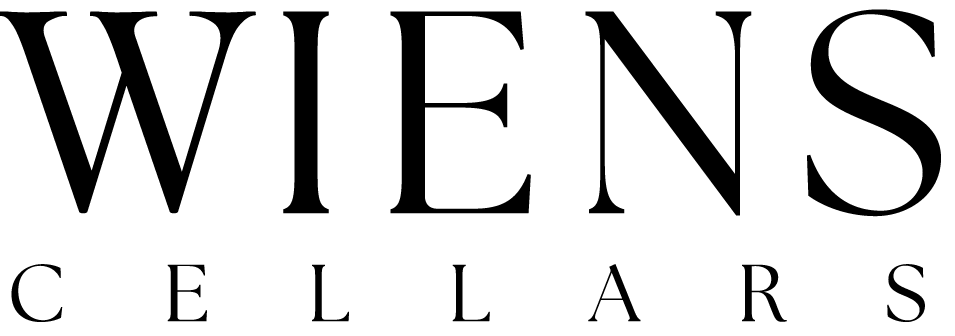Do you know we farm a total of 110 acres of vineyards all throughout the Temecula area? They are located East of us in Sage, West of us in La Cresta and De Luz, and right here in the Valley- including the 10 acres our Tasting Room sits on. Although our vineyard’s locations are relatively close (within 20 miles of the winery), they were strategically chosen based on the differences in their soil composition, climate, and elevation. These differences allow us to grow many different grape varietals in locations that suite each varietal best, including wines like the Cabernet Franc grown at our Sage Vineyard.
Our Sage Vineyard is located 12 miles Northeast of the winery in Sage. At an elevation of 2,500-2,550, it sits about 1,000 feet higher than the winery. This additional elevation creates a slightly different climate with a higher day to night temperature shift than here at the winery. Although there are similar daytime temperatures, and an afternoon breeze like the valley floor, there is generally no morning fog. Since the Sage area is drier, and has less soil nutrients in its primarily sandy loam soil, vines produce smaller quantities of intense fruit giving our Cabernet Franc its concentrated strength and elegance unique to this property. This smaller quantity, yet intense fruit from the Sage Vineyard has become some of our most popular reserve wines.
In addition to the Cabernet Franc grown at our Sage Vineyard, we also have nine other varietals planted including:
Alicante Boushcet- A semi-rare variety that was cultivated in France in 1866 by Henri Bouschet as a cross of Petit Bouschet and Grenache. It was heavily planted in California in the 1920’s for export to the East Coast because of its thick skin and its resistance to rot during transport. We grow a small quantity of it because of its deep and intense red color. We field blend it with our Barbera and/or Sangiovese to add color.
Chardonnay- Chardonnay does well in most of our Temecula vineyards including Sage. Our 2019 Reserve Chardonnay is made from 48% Sage Chardonnay which provides boasting elements of mineral, tangerine and honeysuckle, complemented by lush cream notes and toasted oak derived from barrel aging. Our 2019 Reserve Chardonnay is the perfect balance of full oak body and flavors, countered by lean acidity to provide a crisp, clean finish.
Barbera- Our Sage Vineyard produces Barbera fruit with good acidity, making this wine a perfect accompaniment for more acidic dishes, such as Italian tomato-based dishes. The 2016 Reserve Barbera is 76% Sage Barbera blended with 18% Sage Petite Sirah and 6% Sage Alicante Bouschet making it a 100% Sage Vineyard designate. The 2016 Reserve Barbera has intense flavors of blackberry pie, rosemary, and graham crackers.
Cabernet Sauvignon- Sage vineyard regularly produces some of our best reserve wines, including Cabernet Sauvignon. The rocky, well-drained soil and bigger diurnal shifts (difference between day temperature and night) produce much less fruit, yet much higher quality with balanced sugar and acidity. The berries are small and allow more skin to juice ratio making these wines highly concentrated and full bodied.
Petit Sirah- The arid, rocky granite terrain at the Sage Vineyard makes for a Petite Sirah with incredible concentration and depth. Our 2014 Reserve Petite Sirah was made with 100% Sage Vineyard fruit and showcased aromas of white pepper and roasted rosemary that lead into a dense palate of ripe blackberry, blueberry and French vanilla, with bold, age-worthy tannins on the finish.
Sangiovese- Our Sage Vineyard Sangiovese is used in our popular blends such as our red Crowded and Reflection. Our 2015 Sangiovese is a blend of Temecula Valley and Sage Vineyard Sangiovese and shines with notes of black plum, mulberry and fresh herbs building into a generous palate of crème de cassis, earth notes and warm spice, making this vintage a true crowd pleaser.
Sauvignon Blanc: The aromatics of our Sage Sauvignon Blanc in particular change significantly throughout the ripening process, so in order to attempt to capture the full range of aromatic potential, we harvest our Sauvignon Blanc in two lots. The first is harvested slightly under-ripe at 19 brix, fermenting out to give top notes of lemon grass and green pepper, while the second lot is harvested a little over-ripe at 24 brix, giving us notes of ripe apricot and pineapple. When the two lots are blended back together, they balance each other out perfectly. Lightly oaking enhances the nose by adding some creamy vanilla notes, while rounding out the palate, giving the finished wine a little more weight.
Viognier: Viognier has a tendency to become rich, viscous, and overpowering if left on the vine too long, so we intentionally harvest our Sage Vineyard Viognier a little earlier than most. This allows us to retain enough acidity to cut through, and balance out some of the richness, and gives us a wider spectrum of flavors and aromas that may get “cooked out” if left to over ripen.
Zinfandel: The Sage Vineyard Zinfandel is used in a few of our blends and was a Reserve single variety in 2015. Notes of rose petal potpourri, cinnamon bark, raspberry purée, and balanced acidity are present with most Sage Vineyard Zinfandel vintages.
#block-yui_3_17_2_1_1605136446487_54103 .sqs-gallery-block-grid .sqs-gallery-design-grid { margin-right: -20px; }
#block-yui_3_17_2_1_1605136446487_54103 .sqs-gallery-block-grid .sqs-gallery-design-grid-slide .margin-wrapper { margin-right: 20px; margin-bottom: 20px; }









